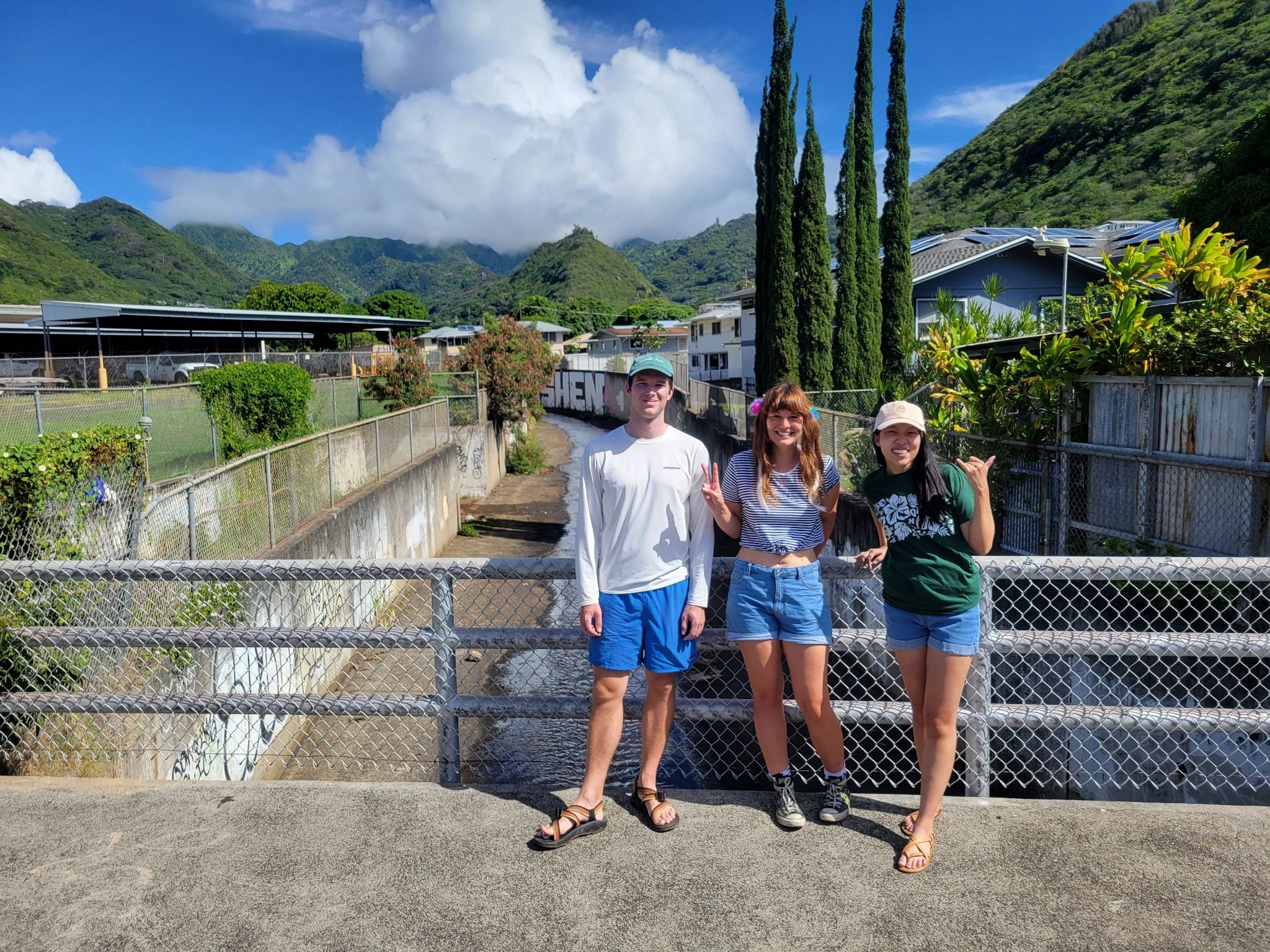This summer, we had a terrific opportunity to work with Project Hōkūlani & CLD-TEAMS whose mission is to
“Support Native Hawaiian, Pacific Islander and Filipino middle and high school students enter into postsecondary science, technology, engineering, and math (STEM) fields through a culturally responsive, strength- and work-based enrichment program. ”
During a week-long summer immersion camp, students had a chance to connect with many STEM field experts to get hands-on experience exploring college and career pathways in everything from ecological conservation to creative digital media. We were honored to be asked to spend a day introducing these haumāna to the challenges our urban stream systems are facing.
Our friends, ʻāina-based learning coordinator, Jon Watase and Principal Tim Los Banos from St. Louis School welcomed the group to Pālolo stream on their campus in Kalaepōhaku. Here, our program led a habitat assessment survey to help students identify various components contributing to poor habitat health for native migratory stream animals, and brainstorm which conditions are currently within our knowledge and skillset to improve. Hideki Kimukai from Sustainable Coastlines provided enthusiastic motivation and equipment to support the students in removing hundreds of pounds of land-based rubbish that found its way to the stream from bridges and storm drains. Aside from educational activities at these types of events, weʻre most proud to exemplify for students the power for change and resiliency that comes from forging strong community bonds and partnerships to tackle these otherwise insurmountable problems.
After our time together in the stream, students from Project Hōkūlani used new creative media skills from a previous dayʻs lessons to bring avatar drawings and composite images to life in service of telling the story of their learning from the stream cleanup. Please check out these awesome student short films here!
Learn more about the work of Hōkūlani Project and their impactful initiatives here: https://cds.coe.hawaii.edu/hokulani/







